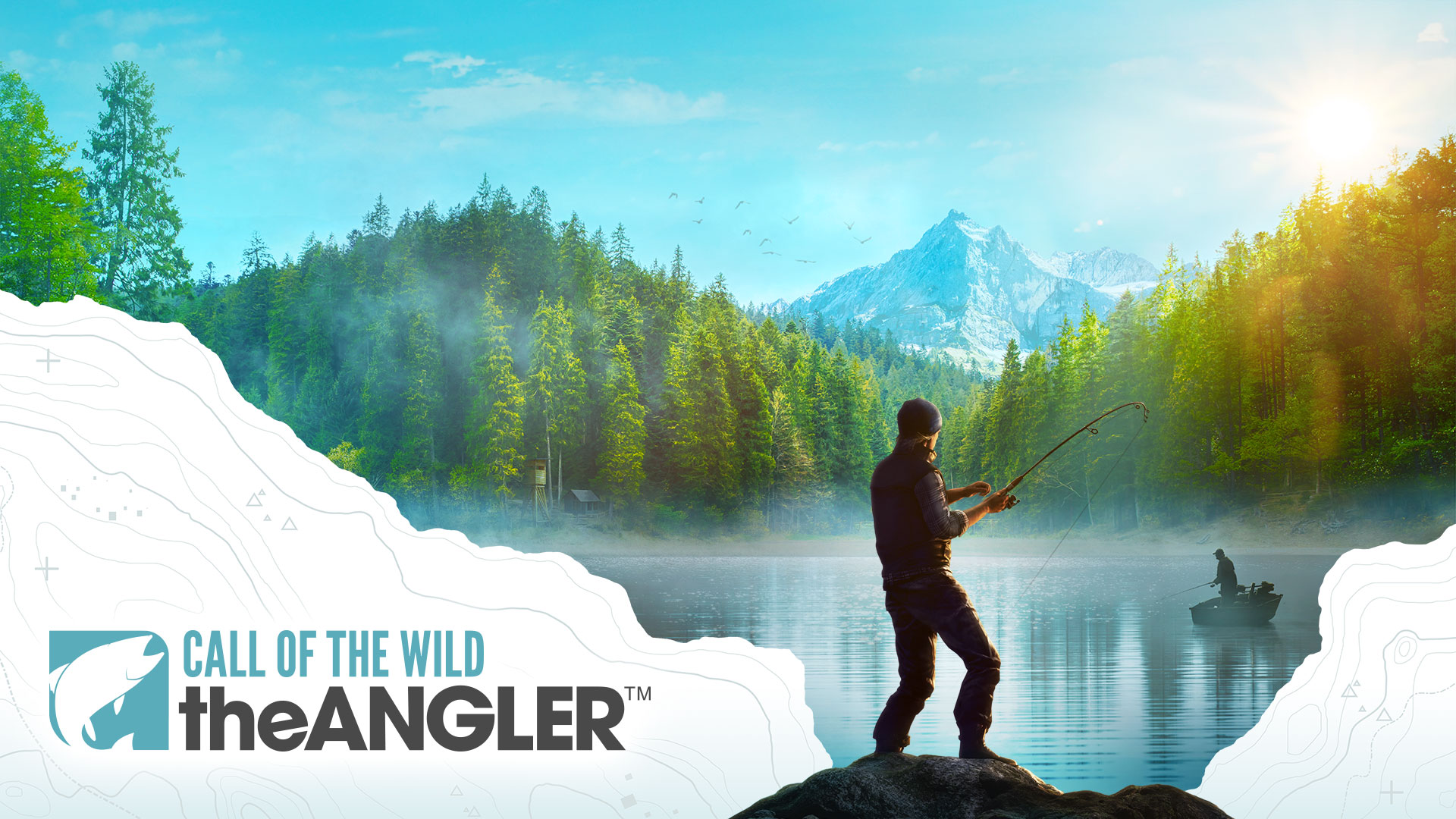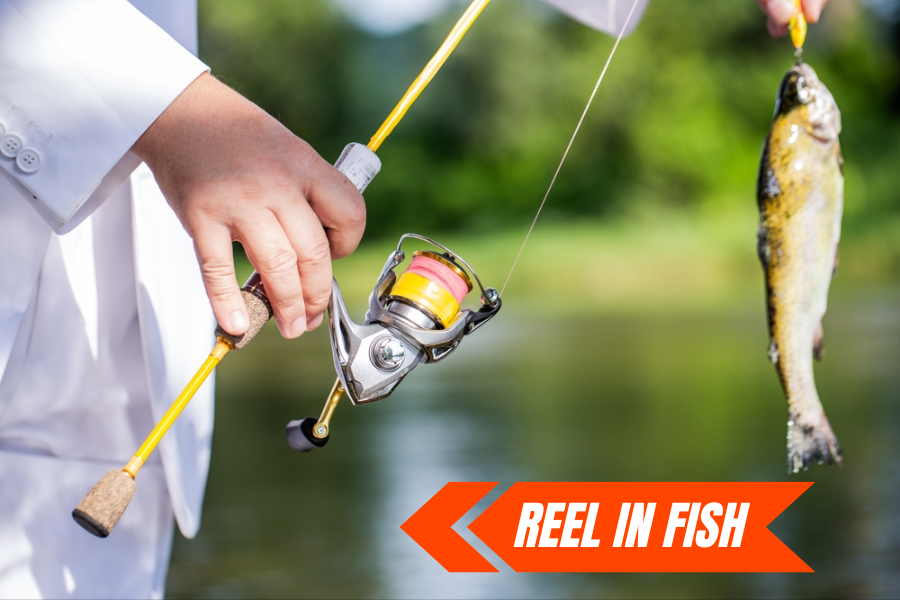To become a pro fisherman, focus on gaining experience through practice and learning from experienced anglers. Fishing is not just a hobby; for many people, it is a way of life.
Whether you are a beginner or an experienced angler, the desire to become a professional fisherman is a natural progression for those passionate about the sport. However, achieving this dream requires dedication, skill building, and a deep love for the water.
In this guide, we will explore the steps you can take to turn your passion for fishing into a successful career as a pro fisherman. By following these tips and strategies, you can maximize your chances of reaching the elite level and making a name for yourself in the fishing industry. So grab your rod and let’s dive in!

Credit: news.xbox.com
The Basics of Fishing
Learn the basics of fishing and turn your hobby into a pro-level skill with these expert tips and techniques. From understanding the right equipment to mastering different fishing techniques, this guide will help you become a successful fisherman.
Are you eager to become a pro fisherman? Before diving into the world of fishing, it’s crucial to understand the basics. Knowing the different types of fish, choosing the right fishing gear, and learning various fishing techniques are essential building blocks to your success.
Understanding Different Types of Fish
When it comes to fishing, understanding the different types of fish is vital. Not all fish are the same, and each species has unique characteristics and behaviors. Here are a few examples of popular fish species:
| Fish Species | Preferred Habitat | Feeding Habits |
|---|---|---|
| Trout | Rivers and streams | Primarily feed on insects and small fish |
| Bass | Lakes and rivers | Prey on smaller fish and insects |
| Salmon | Rivers and oceans | Feed on other fish and krill |
Choosing the Right Fishing Gear
Having the right fishing gear is crucial for a successful fishing trip. With numerous options available, it’s important to carefully select the gear that suits your fishing needs. Before purchasing, consider factors such as:
- The type of fish you want to catch
- The fishing location (i.e., freshwater or saltwater)
- The fishing technique you plan to use
Investing in high-quality fishing rods, reels, lines, hooks, and bait will enhance your chances of hooking that prized catch.
Learning Fishing Techniques
Once you have the appropriate gear and knowledge of different fish species, it’s time to master fishing techniques. Here are a few common techniques used by pro fishermen:
- Casting: This technique involves throwing the line and bait into the water to attract fish.
- Trolling: Trolling is when you slowly drag your bait or lure behind a moving boat.
- Bottom Fishing: This technique involves dropping your bait to the bottom of the water to catch fish that dwell near the seafloor.
Becoming proficient in these techniques requires practice and patience. Study various fishing resources, watch experienced anglers, and spend time on the water to refine your skills.
Developing Skills and Knowledge
Developing skills and knowledge is essential for becoming a pro fisherman. Whether you are a beginner or already have some experience, constant learning is key to improving your fishing abilities. In this section, we will explore some important aspects of developing skills and knowledge in fishing. These include studying fish behavior, mastering casting and reeling, and understanding knots and bait.
Studying Fish Behavior
Understanding fish behavior is crucial for a successful fishing experience. By studying their habits and patterns, you can make better decisions about when and where to fish. Here are a few pointers to help you in your study of fish behavior:
- Observe the environment: Pay attention to the water conditions, temperature, and weather patterns as these factors affect fish behavior.
- Research different fish species: Each species has its own tendencies and preferences. Learn about the specific fish you are targeting to increase your chances of success.
- Seek local knowledge: Speak to experienced anglers or browse online forums to gain insights about fish behavior in your area.
Mastering Casting and Reeling
Casting and reeling are fundamental skills that every pro fisherman must master. A good cast ensures your bait lands precisely where the fish are, while efficient reeling brings your catch back to you smoothly. Here are a few tips to help you improve your casting and reeling:
- Practice your casting technique regularly: Spend time in your backyard or a nearby open area, honing your casting skills. Focus on accuracy and distance.
- Learn different casting techniques: Understand the differences between techniques like overhead cast, side cast, and pitching. Different situations may call for different casting styles.
- Master the art of reeling: Experiment with different reeling speeds and techniques to find what is most effective. Practice keeping a steady rhythm.
Understanding Knots and Bait
Knowing how to tie strong and reliable knots is essential for securing your bait and preventing break-offs. Additionally, understanding the types of bait fish prefer can significantly increase your chances of a successful catch. Consider the following tips:
| Knot types | Bait options |
|---|---|
|
|
Learning to tie these knots reliably and understanding the appropriate bait choices for different situations will greatly improve your fishing skills.
Finding the Best Fishing Spots
One of the most important skills for any aspiring angler is the ability to locate the best fishing spots. Whether you’re a beginner or a seasoned pro, a successful fishing trip starts with finding the right place to cast your line. In this guide, we’ll explore three essential strategies to help you find the best fishing spots and increase your chances of reeling in that big catch.
Researching Local Waterbodies
Before you head out on your fishing adventure, take the time to research the local waterbodies in your area. Check online for information about nearby lakes, rivers, and ponds where you can try your luck. Local fishing forums and websites are excellent resources for finding insider tips and reports about fishing hotspots.
Create a list of potential fishing spots, noting down their proximity to your location and any specific regulations you need to be aware of, such as fishing seasons or permit requirements. It’s worth noting that some areas may require a fishing license, so be sure to research and obtain the necessary permits ahead of time to avoid any legal issues.
Understanding Seasonal Patterns
Seasonal patterns greatly influence fish behavior, so understanding these patterns can help you pinpoint the best fishing spots at any given time. Fish tend to migrate and move to different depths and areas depending on the time of year. For example, during the spring, fish may be found closer to shore or in shallower waters where they spawn. In contrast, during the summer, they might seek cooler temperatures in deeper areas.
Research and study the seasonal patterns of your target fish species to enhance your chances of success. Keep in mind that weather conditions can also impact fish behavior, such as increased activity during overcast days or feeding patterns associated with specific temperature ranges. By recognizing these patterns and adapting your fishing tactics accordingly, you’ll have a better chance of finding the best fishing spots all year round.
Using Technology to Your Advantage
Technology can be a valuable tool in your pursuit of becoming a pro fisherman. Utilize sonar devices, fish finders, and GPS systems to your advantage. These devices can provide essential information about underwater structures, water depth, and the presence of fish. By investing in such technology, you can save time and effort by targeting the most promising fishing spots.
Additionally, there are numerous fishing apps and websites available that provide real-time fishing reports and forecasts. These resources offer valuable insights into fishing conditions, bait suggestions, and recent catches in specific areas. Take advantage of these technological advancements to stay up-to-date and discover the best fishing spots near you.
In conclusion, finding the best fishing spots requires careful research, an understanding of seasonal patterns, and the utilization of technology. By doing your homework and being aware of the fish’s behavior in different seasons, as well as using modern tools to identify promising locations, you’ll increase your chances of having a successful fishing experience. So, get out there, explore new waters, and enjoy the thrill of reeling in your next trophy fish!

Credit: www.amazon.com
Tips for Consistent Success
| Tips for Consistent Success |
|---|
|
To become a pro fisherman, it’s essential to cultivate patience and persistence. Remember, success doesn’t happen overnight. Take the time to study and understand the unique characteristics of different fish species, their habitat, and feeding patterns. Develop patience in waiting for the right moment to strike and persistent when faced with challenging conditions or unsuccessful fishing trips. Your dedication and commitment to the craft will pay off in the long run. |
|
Staying up-to-date with the latest fishing trends and techniques is crucial for consistent success. Fishing methods, tackle, and equipment are constantly evolving, and being knowledgeable about new strategies can significantly improve your chances of catching fish. Stay connected with online fishing communities, read magazines or blogs, and watch instructional videos to learn from experienced anglers. By adapting to the changing trends, you’ll stay one step ahead and increase your overall success rate. |
|
Regular maintenance of your fishing equipment is vital to ensure optimal performance and extend its lifespan. Keep your rods, reels, lines, and hooks clean and well-lubricated. Inspect them regularly for any signs of wear and tear, and if necessary, replace or repair damaged parts. Remember, your equipment is your most valuable asset on the water. Neglecting its maintenance can lead to unexpected failures and missed opportunities to catch fish. Take the time to care for your gear, and it will reward you with consistent success. |
|
To become a pro fisherman, you must embrace a mindset of continuous learning and improvement. Never stop educating yourself about different fish species, their behavior, and the best techniques to target them. Attend workshops, seminars, or join local fishing clubs to learn from seasoned anglers. Practice your casting, bait presentation, and hook-setting techniques regularly to become more skilled and confident on the water. Remember, even the most successful anglers never stop learning. Embracing improvement as a lifelong process will keep you motivated and give you an edge over other fishermen. |

Credit: medium.com
Conclusion
To truly become a professional fisherman, it takes a combination of skill, dedication, and passion. By following these tips and techniques, you can enhance your fishing abilities and elevate your status in the angling world. Remember to practice regularly, learn from experienced anglers, and stay up-to-date with the latest fishing trends.
With perseverance and a love for the sport, you can rise to pro level and make a name for yourself in the fishing community. So get out there, cast your lines, and strive to become the best fisherman you can be.
Happy fishing!
